Biodiversity and Pollutant Countermeasures
- Home > Sustainability > Environment >
The Shin-Etsu Group aims to design environmentally considerate product starting from the product development stage. At the same time, we are also meeting our responsibilities as a chemical company by working actively to ensure the strict control of chemical substances, mitigate global warming, reduce energy consumption, reduce the amount of waste generated, prevent air and water pollution, and make other environmental contributions. We are also engaged in activities such as tree planting at our plant sites in compliance with the Factory Location Act and voluntary river cleaning in areas around our plants. Furthermore, we request our suppliers to implement environmental conservation initiatives in accordance with our CSR procurement guidelines.

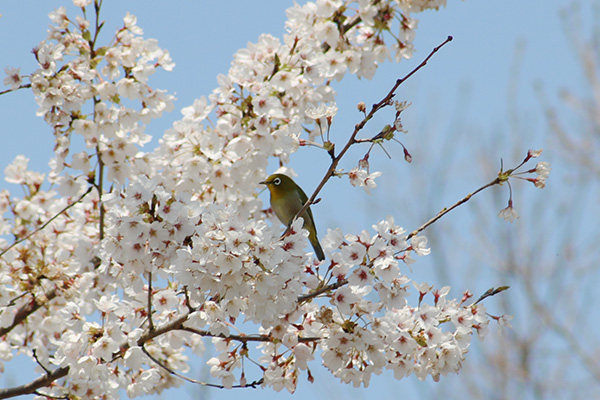
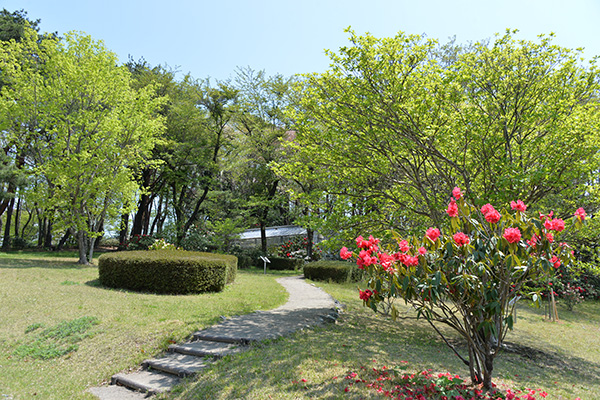
Biodiversity Conservation Efforts of Our Pulp Suppliers
We have purchased pulp derived from wood as the main raw material of cellulose derivatives. When purchasing pulp, we ask all our pulp suppliers to consider the conservation of biodiversity, and we have confirmed that they have all obtained national and/or international forest certifications. In addition, we work hard to learn about our pulp suppliers’ biodiversity activities.
Participated in a Meeting of the Roundtable on Sustainable Palm Oil (RSPO)
In February 2021, the Company participated in a meeting of the Roundtable on Sustainable Palm Oil (RSPO) as an associate member. The RSPO is a non-profit organization that promotes sustainable growth and use of palm oil by way of cooperation within the supply chain and open dialogue with interested parties. The Company agreed with the purpose and participated in the RSPO, and obtained mass balance certification in March 2023.
Related Information
Reduction of Chemical Emissions
We strives to prevent health hazards and minimize the environmental impact of chemical substances in the processes of development, manufacturing, distribution, use, consumption and disposal. We appropriately design chemical substances in accordance with laws and regulations, evaluate their safety based on the latest information collected in cooperation with government agencies and affiliated organizations, manufacture our products using optimal facilities, and strive to reduce emissions of chemical substances. For example, we are taking measures to reduce the amount of chemical substances we use that are released into the environment and transferred through the Chemical Substances Control Law*1 and the PRTR system*2. Furthermore, in order to minimize the impact of chemical substances on workers, we are promoting the reduction of emissions and the use of safer alternatives by improving processes and equipment through the implementation of risk assessments of chemical substances, as mandated by the revised Industrial Safety and Health Act.
With the enforcement of the revised PRTR Law, silicon carbide and other substances have become a Type 1 designated chemical substance and is now subject to reporting from 2023 onwards, which has resulted in a significant increase in the total transferred volume of PRTR controlled substance.
The Group does not use or produce substances that fall under the Stockholm Convention on Persistent Organic Pollutants*3.
*1PRTR system
Chemical substance release and transfer notification based on the “Act on Confirmation, etc. of Release Amounts of Specific Chemical Substances in the Environment and Promotion of Improvements to the Management Thereof”
*2PRTR Law
Short for “Act on Confirmation, etc. of Release Amounts of Specific Chemical Substances in the Environment and Promotion of Improvements to the Management Thereof,” it is intended to promote the voluntary control of chemical substances by business operators in order to prevent the risk of damaging the environment.
*3Stockholm Convention on Persistent Organic Pollutants
It is a convention that prohibits or restricts the production, use, export, or import of designated substances for the purpose of reducing persistent organic pollutants that would require immediate attention. It is also known as the Stockholm Convention or POPs Convention
PRTR Controlled Substance: Trend of Total Amount Released
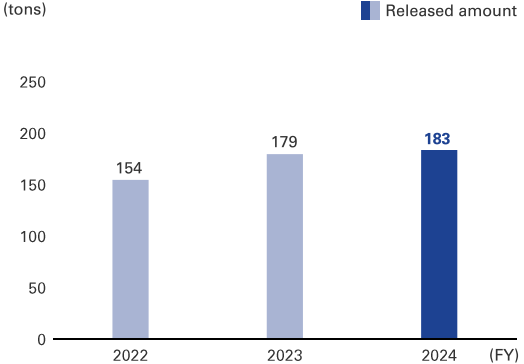
PRTR Controlled Substance: Trend of Total Amount Transferred
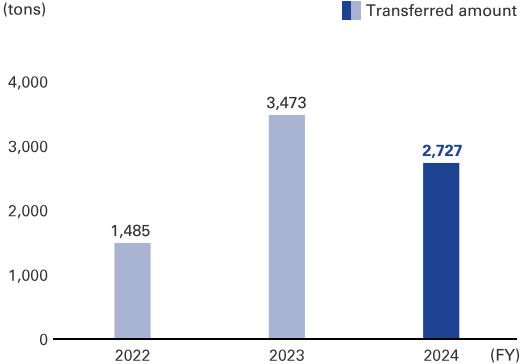
PRTR Controlled Substance: Chloromethane Release Trend
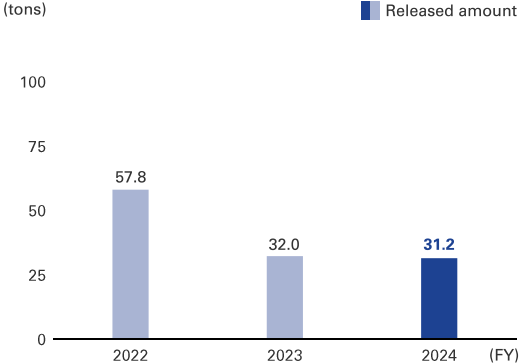
PRTR Controlled Substance: Chloroethylene Release Trend
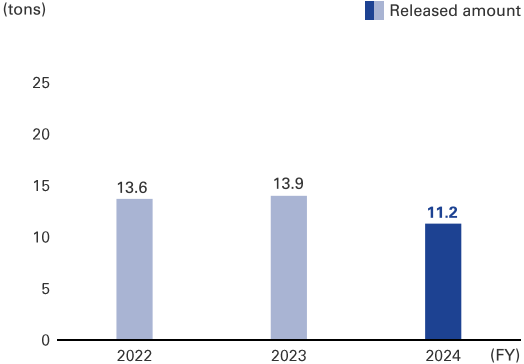
*The figures are aggregated only for Shin-Etsu Chemical and consolidated companies in Japan.
*The amount of emissions of substances designated by the PRTR system changes depending on the production volume.
Monitoring of Air and Soil
The Group is working to reduce emissions of air pollutants by setting emission reduction targets at each of our Group companies and by converting to the use of fuel components with less sulfur. Each group company carried out regular investigations on their emitted gas to confirm that they comply with laws and regulations.
Groundwater and soil monitoring is carried out at each plant in accordance with the Soil Contamination Countermeasures Act, and we make sure that we are in compliance with laws and regulations. In FY2024, the company performed groundwater and soil monitoring 260 times at its plant sites.
FY2024
- Target
- Reduce emissions of air pollutants in terms of production intensity at an average annual rate of 1%.
- Results
- The annual average rate from FY2021 to FY2024 is an increase of 14.1% in Soot in terms of intensity, and an increase of 1.3% in SOx in terms of intensity.
- Evaluation
- The targets were not achieved.
FY2025
- Target
- Reduce emissions of air pollutants in terms of production intensity at an average annual rate of 1%.
Soot Emissions Trend
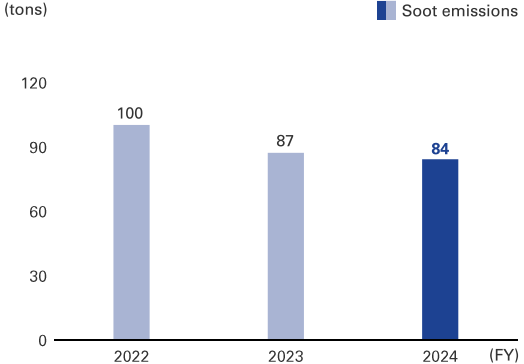
NOx Emissions Trend
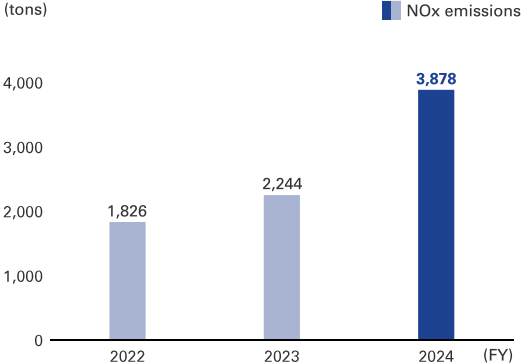
SOx Emissions Trend
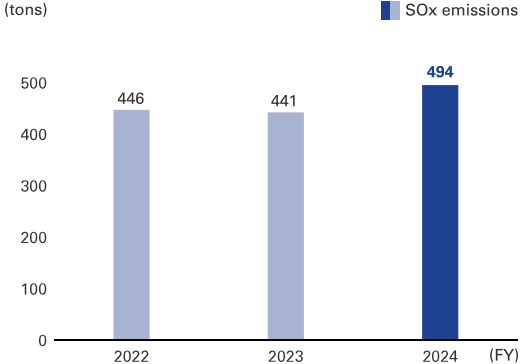
Related Information
